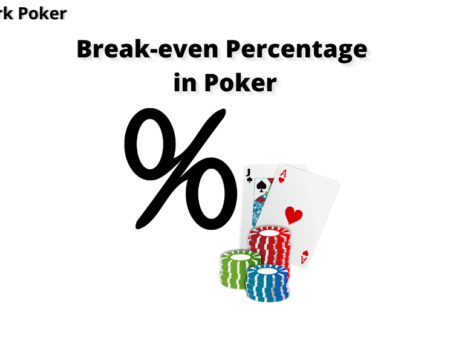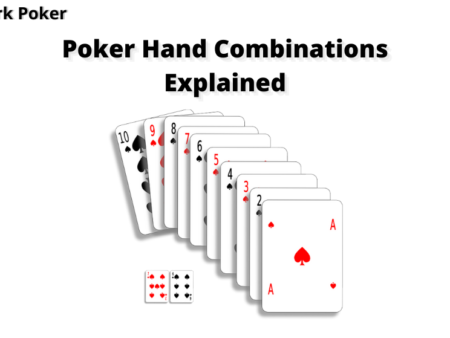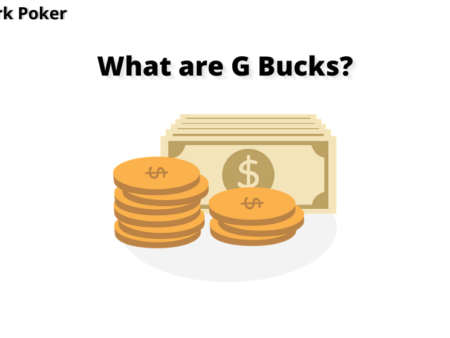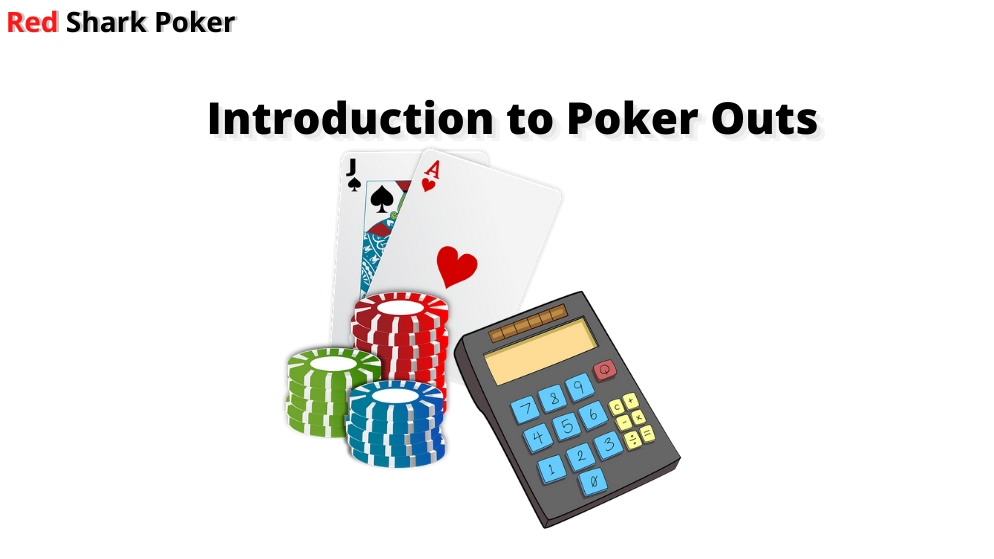
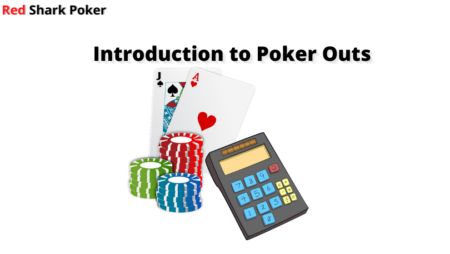
If you are a beginner who has just learnt how to play poker, the next important concept you should learn is Poker Outs. Calculating poker outs involves simple mathematics, and it will help you in making profitable decisions. As the game of poker is about probability, the number of poker outs will help in determining the probability of winning the pot.
What are Poker Outs?
An out is considered any card from the deck that will improve your hand. If that particular hand (out) is drawn from the deck, you will have the best poker hand to win the pot. For example, if you are dealt 5♦ 6♦, and the board reads T♦ K♣ 2♦, any diamond-suited card drawn from the deck will complete a flush. If the out is drawn from the deck and hits on the turn or river, your hand will improve to a flush.
What is a Drawing Hand?
Poker outs are usually calculated in a drawing hand. A drawing hand is an unmade hand that has the potential to become the best hand if one of the outs hit the board. In the above example, your hand 5♦ 6♦ with the board T♦ K♣ 2♦ is not the best hand, but it has the potential to become a flush if any diamond-suited card hits the board. In this scenario, it is a flush draw as a diamond-suited hand has not hit the board yet.
Types of Drawing Hands in Poker
There are different types of drawing hands in poker, and the number of outs varies accordingly. Let us look at the different drawing hands and calculate their outs mathematically.
Flush Draw | Number of Outs – 9
Also known as four flush, a flush draw has four cards of the same suit. You need only one card of the same suit to hit the board to complete a flush. There are two types of flush draw:
1) When your hand has 2 cards of the same suit and the board hits 2 cards of the same suit. For example,
Your Hand: 5♦ 6♦
Flop: T♦ K♣ 2♦
2) When you have 1 card of the specific suit and the board hits 3 cards of that suit. For example,
Your Hand: 5♦ 6♣
Flop: T♦ K♦ 2♦
Why does a Flush Draw have 9 Outs?
Here’s the simple logic behind a flush draw having 9 outs:
- A deck has 52 cards in four different suits ♠ ♦ ♣ ♥.
- Each suit has 13 cards (A, 2, 3, 4, 5, 6, 7, 8, 9, 10, J, Q & K).
- 4 cards of the same suit are drawn out of the deck (your hand + board).
- If 4 cards are drawn out of the 13 cards, there are 9 cards remaining in the deck.
If you hit any of the 9 outs on the turn or the river, you will complete your flush draw.
Straight Draw
There are two types of straight draws – Open-ended Straight Draw and Inside Straight Draw.
Open-ended Straight Draw | Number of Outs – 8
An open-ended straight draw has four connecting cards, and you need to hit one card that connects the first or the last card of the sequence. In other words, you need to hit one card at either end to make a straight. For example,
Your Hand: 5♦ 6♣
Flop: 7♦ 8♣ 2♥
Here, you need a 4 or a 9 to complete a straight. If you hit a 4 on the turn or the river, you complete a straight with 4, 5, 6, 7 and 8. And, if you hit a 9, you complete a straight with 5, 6, 7, 8 and 9. So, the draws are open on both ends.
Why does an Open-ended Straight Draw have 8 Outs?
Here’s the simple logic behind an open-ended straight draw having 8 outs:
- A deck has 52 cards in four different suits ♠ ♦ ♣ ♥.
- There are four suits of each card rank. For example, A♠ A♦ A♣ A♥ are the four suits of an Ace.
- 2 cards can help form a straight from any of the open ends.
- Those 2 card-ranks have a total of 8 cards (2 X 4 different suits)
- In the above example, there will be 8 outs of cards 4 and 9 – 4♠ 4♦ 4♣ 4♥ and 9♠ 9♦ 9♣ ♥.
If you hit any of the 8 outs on the turn or the river, you will complete your open-ended straight draw.
Inside Straight Draw | Number of Outs – 4
An inside straight draw, also known as gutshot straight draw, needs a specific card rank to hit the board in order to complete a straight. For example,
Your Hand: 5♦ 6♣
Flop: 7♦ 9♣ 2♥
Here, you specifically need an 8 to complete a straight. If you hit an 8, you complete your straight of 5, 6, 7, 8 and 9.
Why does an Inside Straight Draw have 4 Outs?
Here’s the simple logic behind an inside straight draw having 4 outs:
- You need one specific card to complete your straight.
- Each card rank has four suits.
- In the above example, an 8 has four suits 8♠ 8♦ 8♣ 8♥.
- So, you have 4 outs for completing an inside straight draw.
If you hit any of the 4 outs on the turn or the river, you will complete your inside straight draw.
Combo Draws
When you have both straight draw and flush draw, you have a combo draw. Some of the common combo draws are as follows:
Inside Straight Flush Draw | Number of Outs – 12
An inside straight flush draw is a combination of an inside straight draw and a flush draw. You have the chance to form either a straight or a flush if one of the outs hit the board. For example,
Your Hand: 5♦ 6♦
Flop: 8♦ 9♠ 2♦
Here, you have four diamonds 5♦ 6♦ 8♦ 2♦; if a diamond-suited card hits the board, you will complete your flush draw. Also, if a 7 hits the board, you will complete your inside straight draw.
Why does an Inside Straight Flush Draw have 12 Outs?
Let’s look at the above example to understand why an inside straight flush draw has 12 outs:
- An inside straight draw has 4 outs – 7♠ 7♦ 7♣ 7♥
- A flush draw has 9 outs – 3♦ 4♦ 7♦ 9♦ 10♦ J♦ Q♦ K♦ A♦
- 4 outs + 9 outs = 13. But why does an Inside Straight Flush Draw have 12 outs?
If you observe closely, 7♦ is common in both straight and flush draws.
So, you will have to subtract the common draw from the total number of outs.
Open-Ended Straight Flush Draw | Number of Outs – 15
An open-ended straight flush draw is a combination of an open-ended straight draw and a flush draw. You have the chance to form either a straight or a flush if one of the outs hit the board. For example,
Your Hand: 5♦ 6♦
Flop: 7♦ 8♣ 2♦
Here, you have four diamonds 5♦ 6♦ 7♦ 2♦ and four connecting cards 5♦ 6♦ 7♦ 8♣. If a diamond-suited card hits the board, you complete your flush. And, if a 4 or a 9 hits the board, you complete your straight.
Why does an Open-Ended Straight Flush Draw have 15 Outs?
Let’s look at the above example to understand why an open-ended straight flush draw has 15 outs:
- An open-ended straight draw has 8 outs – 4♠ 4♦ 4♣ 4♥ and 9♠ 9♦ 9♣ 9♥.
- A flush draw has 9 outs – 3♦ 4♦ 8♦ 9♦ 10♦ J♦ Q♦ K♦ A♦
- 8 outs + 9 outs = 17. But why does an Open-Ended Straight Flush Draw have 15 outs?
If you observe closely, 4♦ and 9♦ are common in both straight and flush draws.
So, you will have to subtract the 2 common draws from the total number of outs.
An open-ended straight flush draw is one of the best drawing hands. If you hit any of those 15 outs on the turn or the river, you will complete your open-ended straight draw or flush draw.
Outs to Improve Your Already-made Hand
There is a probability that your already-made hand can become better if one of the outs hit the board. For example, a Pair can become a Two Pair or a Two Pair can become a Full House. Let’s look at those common drawing hands:
One Pair Improves to Three of a Kind
If an out hits the board and connects with the pair, a Pair will become a Three of a Kind. There are only 2 outs left in the deck that can help a Pair become a Three of a Kind. For example,
Your Hand: 5♦ 6♣
Flop: 5♠ 8♣ 2♦
The two outs are 5♣ and 5♥. If any of these outs hit the board, your hand will improve from a Pair to a Three of a Kind.
Two Pair Improves to a Full House
If an out hits the board and connects with any of the pairs, A Two Pair will become a Full House. There are 4 outs left in the deck that can help a Two Pair become a Full House. For example,
Your Hand: 5♦ 6♣
Flop: 5♠ K♣ 6♦
The four outs are 5♣, 5♥, 6♥ and 6♠. If any of these outs hit the board, your hand will improve from a Two Pair to a Full House.
One Pair Improves to Two Pair or Three of a Kind
You have 5 outs for your One Pair to improve to a Two Pair or a Three of a Kind. For example,
Your Hand: J♣ Q♦
Flop: J♦ 10♣ 3♠
There are five outs – J♠ J♥ Q♣ Q♠ and Q♥. If a Jack hits the board, you will have a Three of a Kind. And, if a Queen hits the board, you will have a Two Pair.
Two Over Cards Improve to an Over Pair
If you have two over cards, there are 6 outs that can help you to have an over pair. For example,
Your Hand: A♦ J♥
Flop: 10♣ 8♦ 2♠
There are six outs – A♠ A♣ A♥ J♣ J♠ and J♦. If an Ace or a Jack hits the board, you will have an over pair.
Three of a Kind Improves to Full House or Four of a Kind
If you have a Three of Kind, there are 7 outs that can help you to improve your hand to a Full House or a Four of a Kind.
For example,
Your Hand: 6♦ 6♣
Flop: 6♠ 7♥ J♣
There are seven outs – 6♥ 7♣ 7♦ 7♠ J♠ J♥ and J♦. If a 7 or a Jack hits the board, you will have Full House; and if, a 6 hits, you will have a Four of a Kind.
Poker Outs Chart
Look at the chart below to see the number of outs you need to complete your draw or improve your already-made hand.
| Type of Draw | Number of Outs |
| One Pair to Three of a Kind | 2 |
| Two Pair to a Full House | 4 |
| Inside Straight Draw | 4 |
| One Pair to Two Pair or Three of a Kind | 5 |
| Two Over Cards to an Over Pair | 6 |
| Three of a Kind to Full House or Four of a Kind | 7 |
| Open-ended Straight Draw | 8 |
| Flush Draw | 9 |
| Inside Straight Flush Draw | 12 |
| Open-ended Straight Flush Draw | 15 |
Conclusion
The number of poker outs for different draws and hand improvements should be at your fingertips. If you have just started to play poker, train yourself in a way to calculate the outs in seconds. The right calculations will help you to make good decisions in a drawing hand and evaluate how much of risks you should take judiciously.
The next chapter you should be focussing on is Pot Odds. Click on the link to learn how to calculate pot odds.

